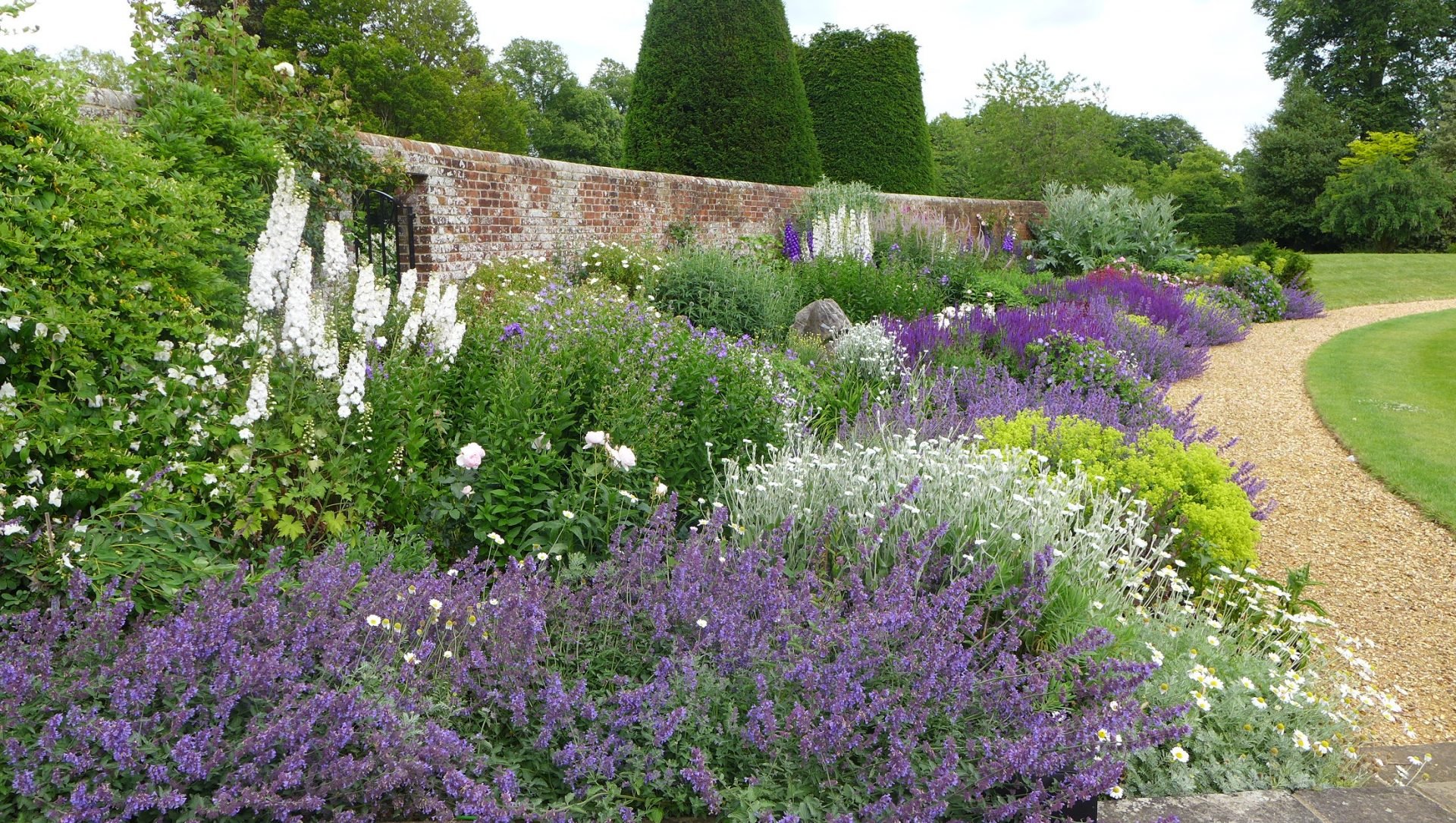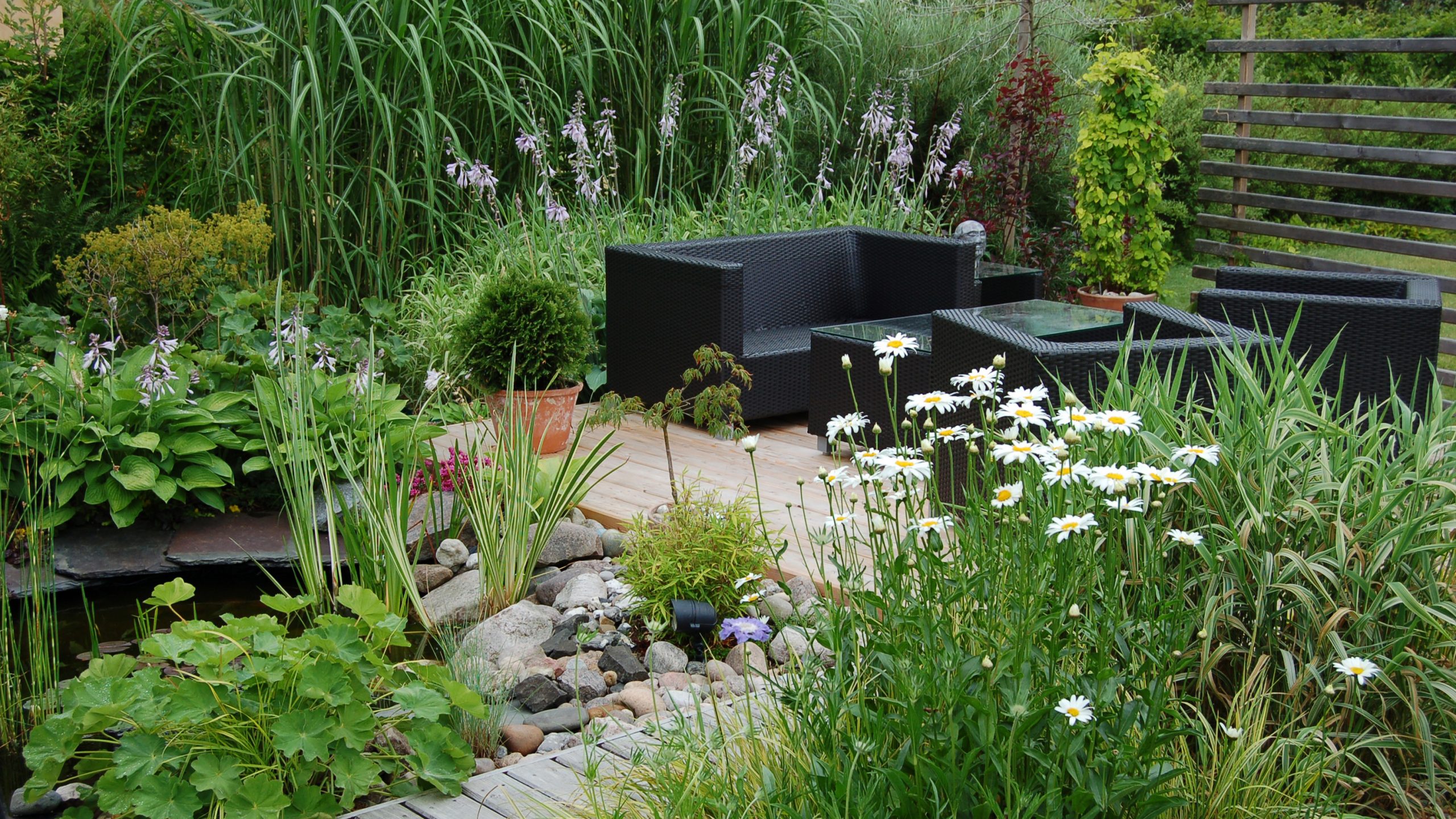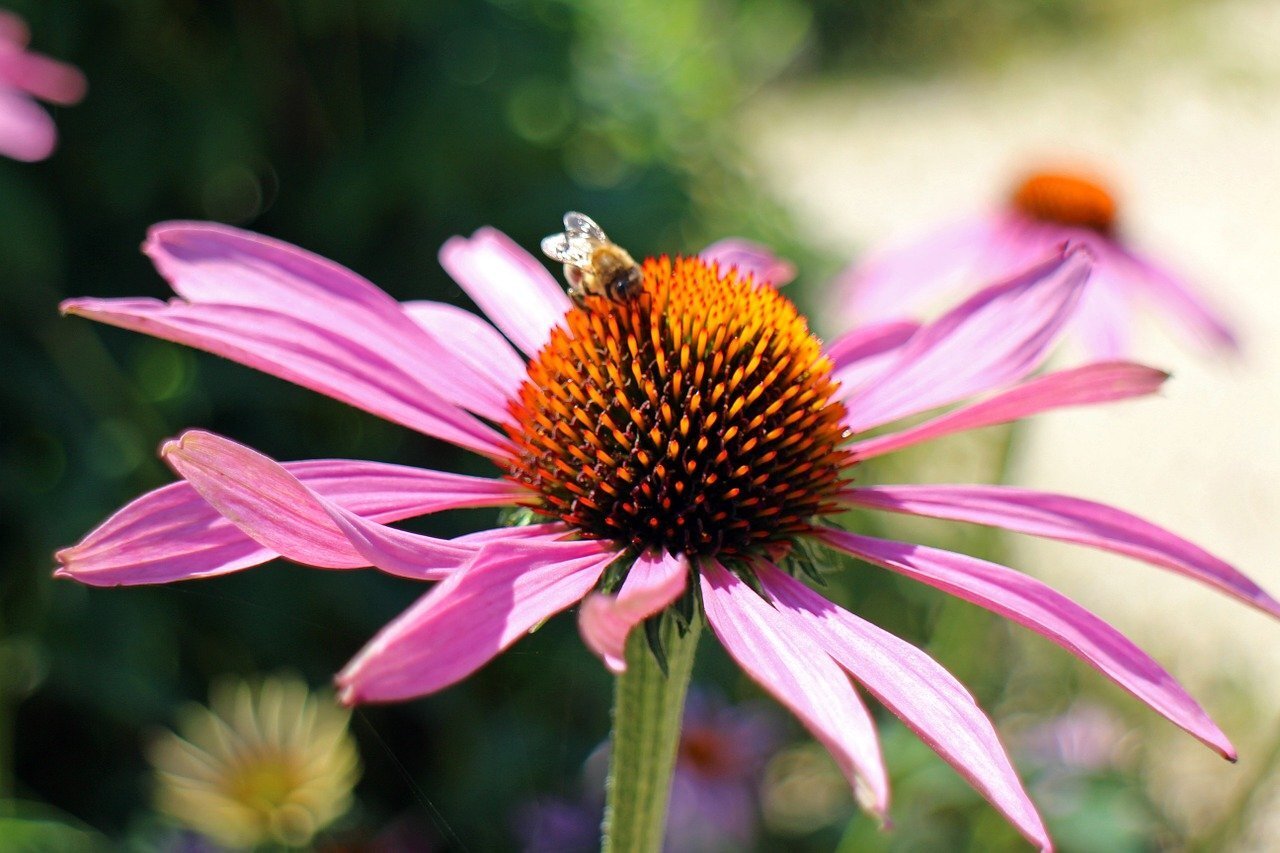14 Creative Ideas To Replace Your Traditional Grass Lawn
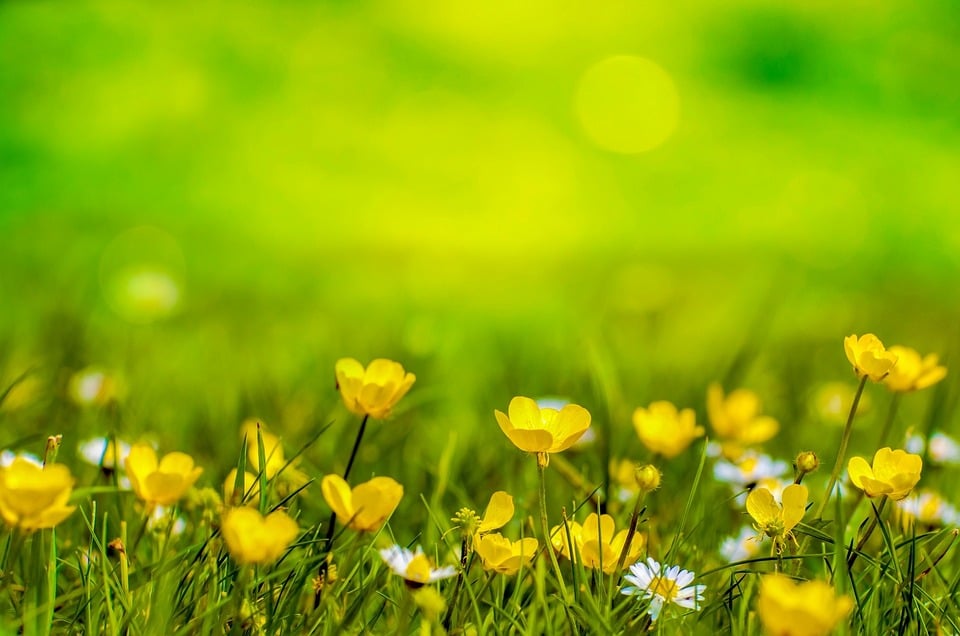
Table of Contents
The grass is a great medium for recreation and is very soothing to the eye. The green grass in a lawn can help in trapping carbon dioxide, lower noise pollution, improve the quality of soil, and even trap carbon dioxide. However, maintaining a manicured lawn is not child’s play. Watering the turf grass consistently, mowing the space, and also spraying pesticides can be very time-consuming and also burn a big hole in your pocket.
To give some relief to your eyes and to break the monotony of the green grass in your garden, here are multiple lawn alternatives that can be added to give your space some extra texture and variety.
1. Clover
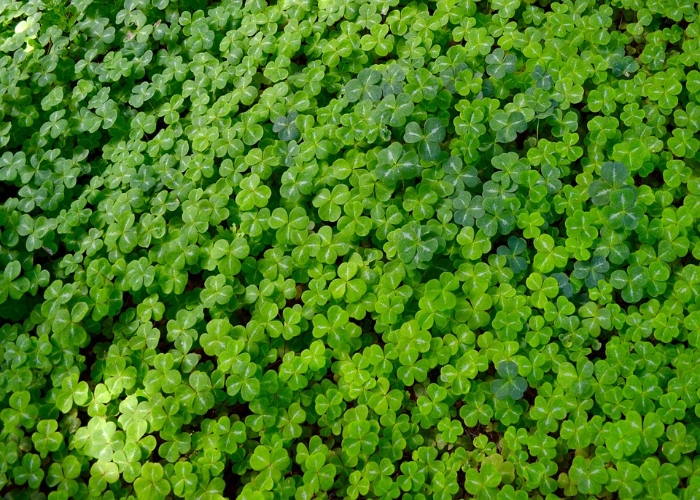
Also called Trefoil or Trifolium, Clover belongs to the pea family. It can be used as an effective ground cover as it can tolerate low to moderate foot traffic, fix nitrogen levels of the soil and serve the purpose of green manure or a cover crop that is attractive to pollinators such as bees. However, the plant is susceptible to alfalfa weevils, foliar diseases, and mosaics, so it can demand some care. It can retain its green colour throughout the summer even if it is grown in poor-quality subsoil and requires bare minimum mowing.
2. Moss
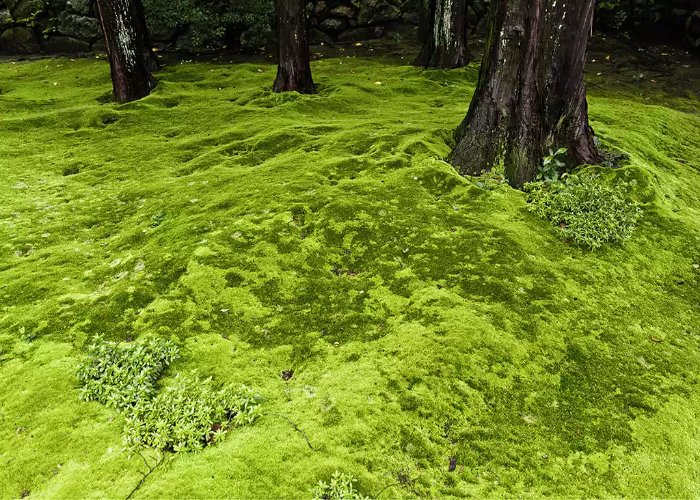
The drought-tolerant plant is an excellent alternative to grass because it can withstand adequate foot traffic. A moss lawn can be walked, is soft to be sat on, and can be utilised as a living mulch. For a lush moss cover, provide it with some shade to prevent it from drying out and acidic soil from growing in. It can give your lawn a Japanese zen vibe, thus, adding another dimension to your personal space. Although the initial cost of growing moss in place of grass is considerable, a moss lawn neither requires mowing nor much upkeep once the roots are established and are, therefore, more sustainable than turf grass.
3. Creeping Jenny
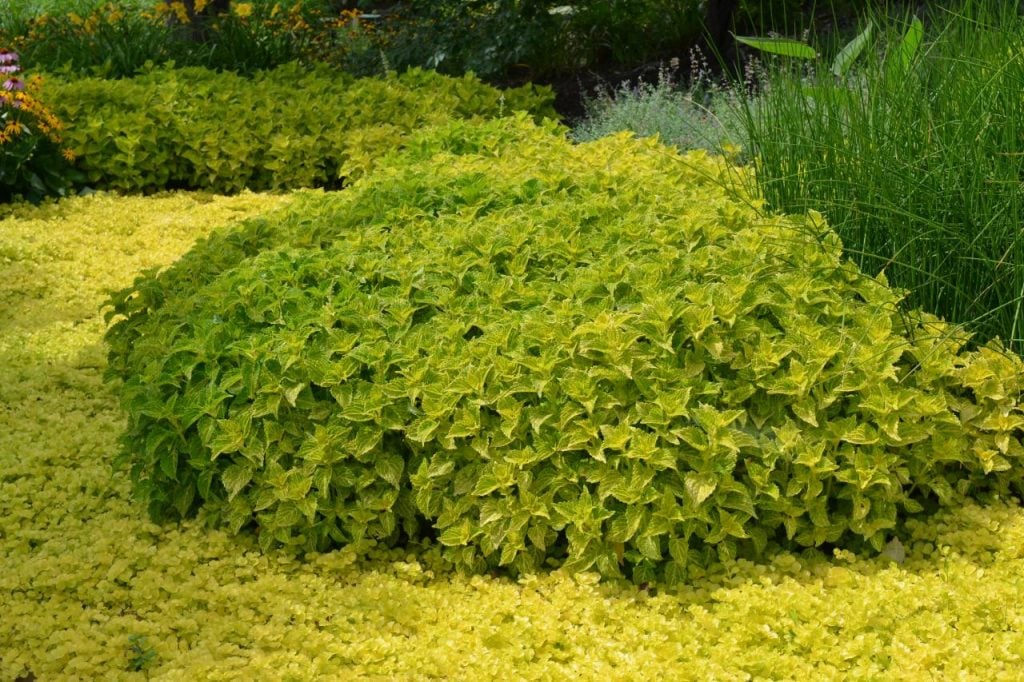
The evergreen ground-covering plant, which spreads wildly and has tiny yellow blossoms, is perfect for the summer season. Creeping Jenny is a prostrate perennial herb that belongs to the primrose family. Native to Europe, grow the plant in a spot that receives plenty of sunlight but gets partial shade as well to ensure quick growth and soil that is highly moist and rich. The water-thirsty plant is an attraction for pests like slugs, caterpillars and aphids and illnesses including rust and leaf spot. The leaves and flowers are used to make an aromatic tea that also has medicinal benefits for treating wounds.
4. Red Creeping Thyme
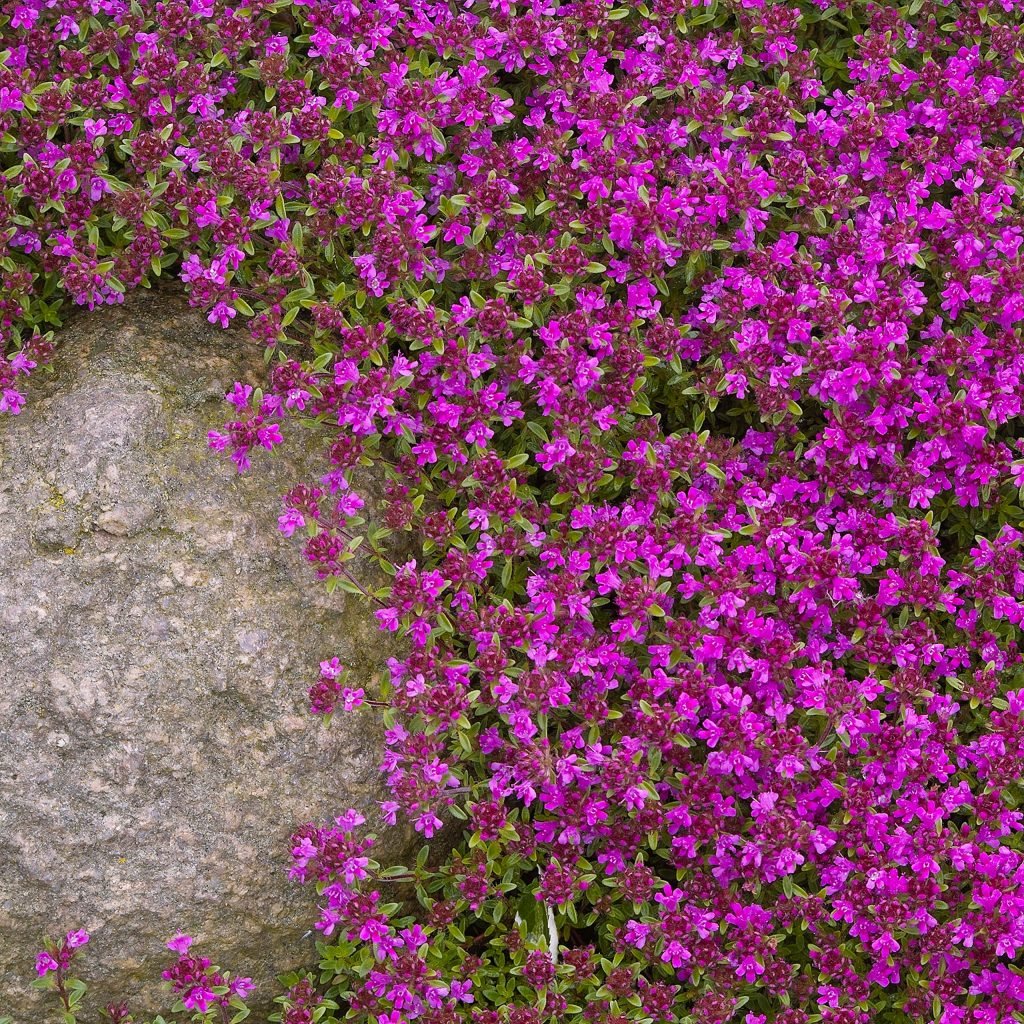
Native to Southern Europe and Turkey, the red creeping thyme is a ground cover plant that can tolerate light foot traffic. The sun-loving plant needs to be grown in either rocky soil or sandy loam because the roots of the plant can rot if grown in soil that retains moisture. Therefore, water the plant once in ten days only when it has established its roots and use organic fertiliser in the spring to promote lush growth. Your garden will buzz with bees, for the red creeping thyme produces nectar and is particularly beneficial when it comes to prohibiting the growth of weeds.
5. Stonecrop
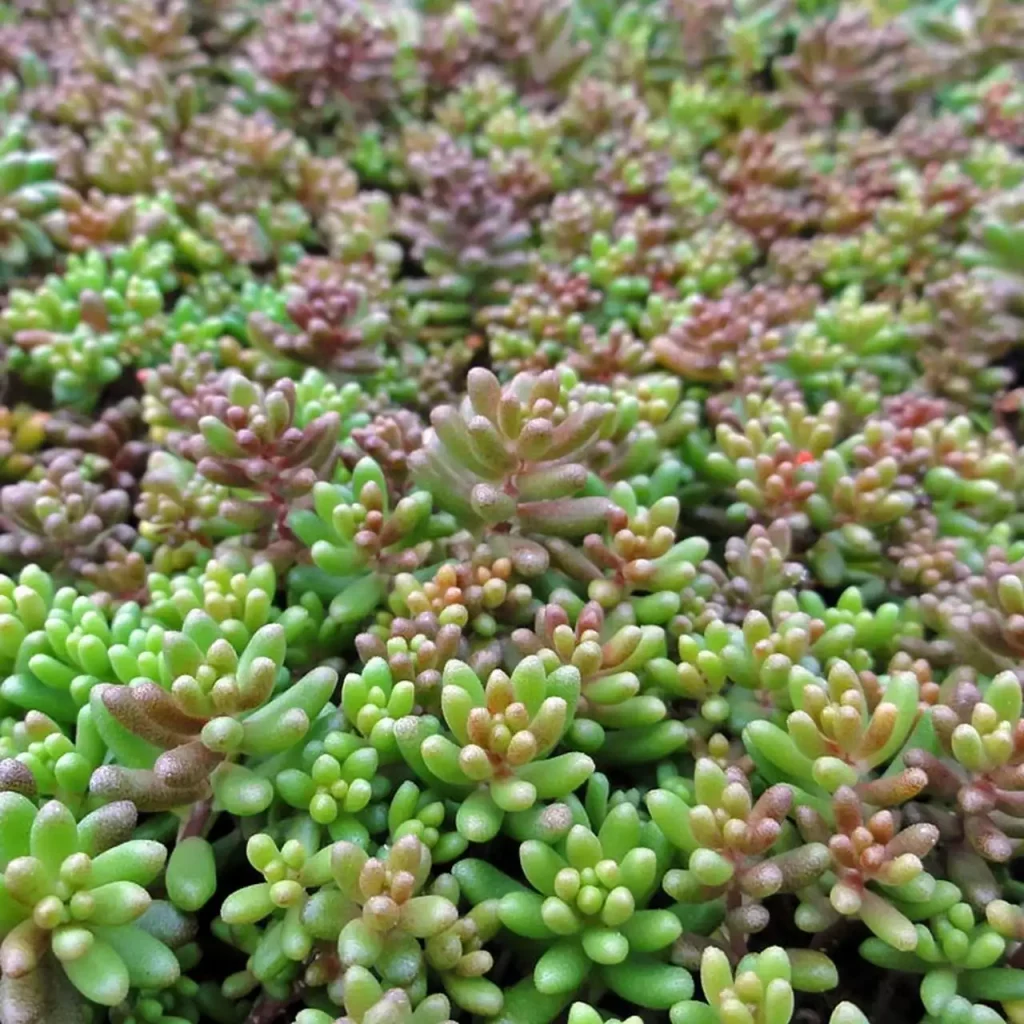
Also referred to as Sedum or Orpine, these low-growing plants are famous, particularly for their unique foliage that thrives in rocky gardens. The plant has fibrous roots, and flowers are borne in clusters of white, yellow, pink, and purple. These convenient-to-grow groups of succulents can make your garden look appealing during the summer and autumn seasons. The waxy leaves are quite thick and have water-storage tissues that enable them to absorb water directly from the air. Therefore, growing stone crops can be an excellent option if you live in a region where you frequently need to water your lawn to keep it green due to high temperatures.
6. Sweet Woodruff
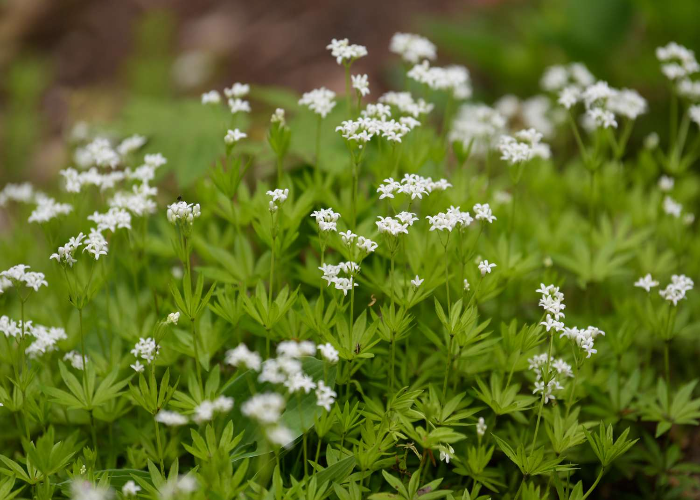
Sweet Woodruff absolutely loves shade, including dry shade. These plants grow beautifully in well-drained soil where there is plenty of shade and very little sunlight. Although it is a mat-forming perennial plant, the sweet woodruff, also called wild baby’s breath, is not invasive in nature. The plant is not toxic to animals or humans as the foliage and flowers are both edible and can be used as an ingredient in salads, jellies and beers. When eaten raw, the flavour is mild. However, you can dehydrate the plants for them to last longer and to give the taste a hint of vanilla.
7. Corsican Mint
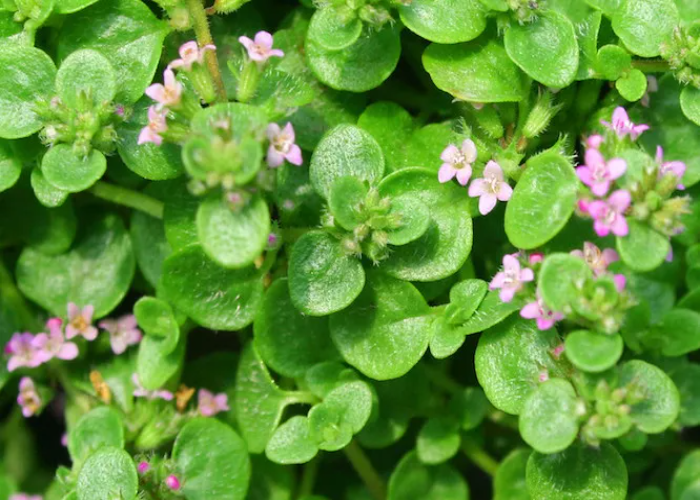
The Corsican mint is indigenous to Sardinia, Corsica, and Montecristo. However, it has been naturalised in a few parts of Europe and the British Isles. The slow-growing and shade-loving plant takes its own sweet time to grow under very specific environmental conditions as an eye-catching ground cover. Capable of exuding a strong minty scent, it can work as an effective pest, including a mouse repellant that can last for more than ten years. Therefore, growing Corsican mint with cabbage, broccoli and cauliflowers can keep rodents at bay without spraying artificial fertilisers. However, it’s not the best option for those who have asthma or are sensitive to strong scents.
8. Stone and Gravel
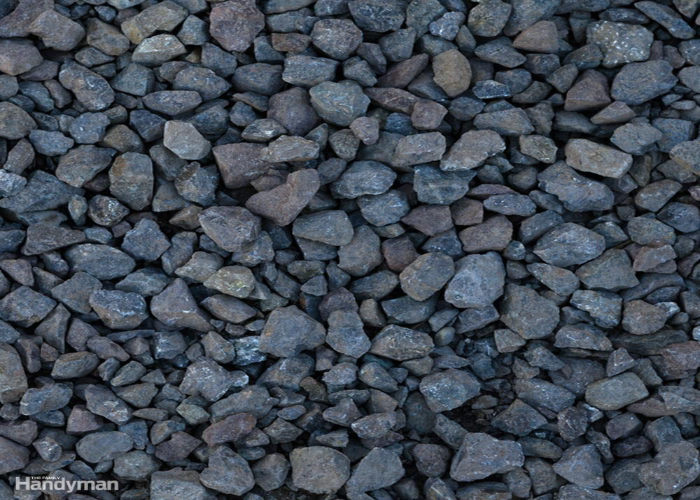
As an alternative to grass in your garden, you can revamp the look of your yard by spreading pea gravel, crushed granite and sand. The ground cover doesn’t require much of upkeep, offers a casual aesthetic eye, and is convenient to store because they do not rot. You can place these rocks along walkways or pathways to make a garden look picture-perfect. You do not have to worry about mowing the space or spraying herbicides or fertilisers; you can also let your pets play on the surface without worrying about their safety. The disadvantage associated with having stone as a ground cover in your backyard is that it can get really hot during summer and is not the safest option if you have young kids who like to play outdoors, as it can increase the risk of injuries.
9. Blue Star Creeper
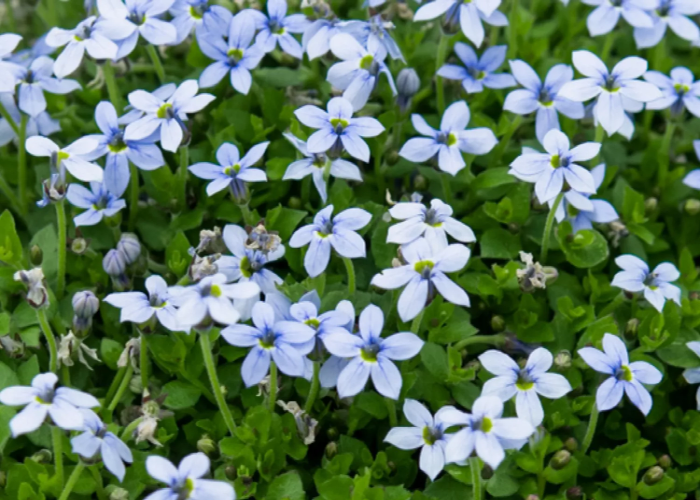
A dainty plant that can grow only 4 inches tall can be an aesthetically pleasing substitute for grass that needs no mowing. The hard plant spreads by underground runners, is resistant to deer and rabbits, and also forms a thick blanket that is sturdy enough to tolerate all kinds of foot traffic. The plant gets its name from the star-shaped blooms that bloom from spring through late summer and makes your garden look stunning. Once mature, it can grow up to 3″ tall and 18″ wide. To make your garden more colourful, pair the blue star creeper with red rover foamy bells that have scarlet-coloured leaves and beautiful lobed foliage. The contrast of hues will add life to your garden.
10. Creeping Charlie
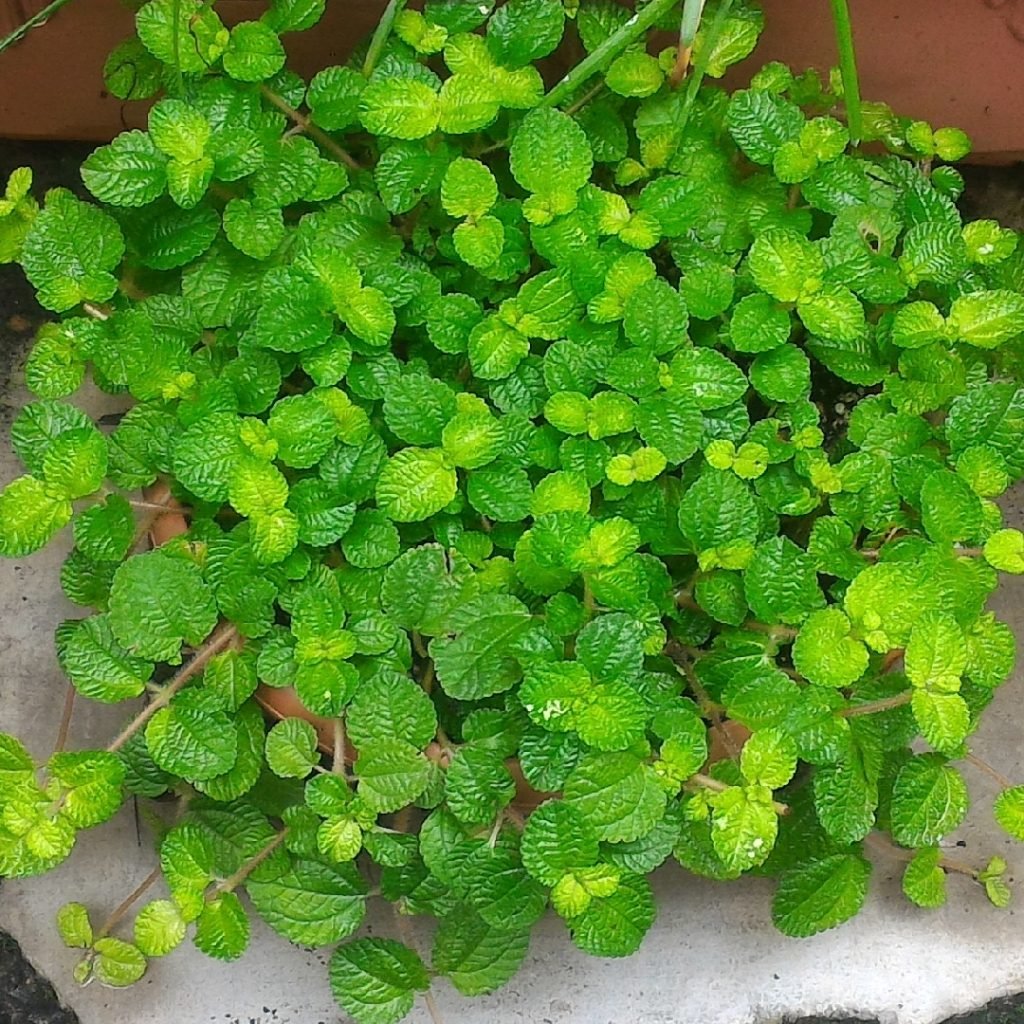
Also called Ground Ivy, this herbaceous perennial plant spreads by seeding and by creeping stolons that grow along the ground. The plant is fit for human consumption as it has a strong mint aroma and a slightly acidic tang making it an interesting ingredient that can be added to your soups and salads. However, creeping Charlie is toxic to swine, cattle and horses. The colour of the kidney-shaped foliage ranges between green and purple, and it forms a thick ground mat. The plant also serves an ornamental purpose for the bluish-violet flowers that grow in clusters and can make your lawn look like a meadow.
11. Creeping Thyme
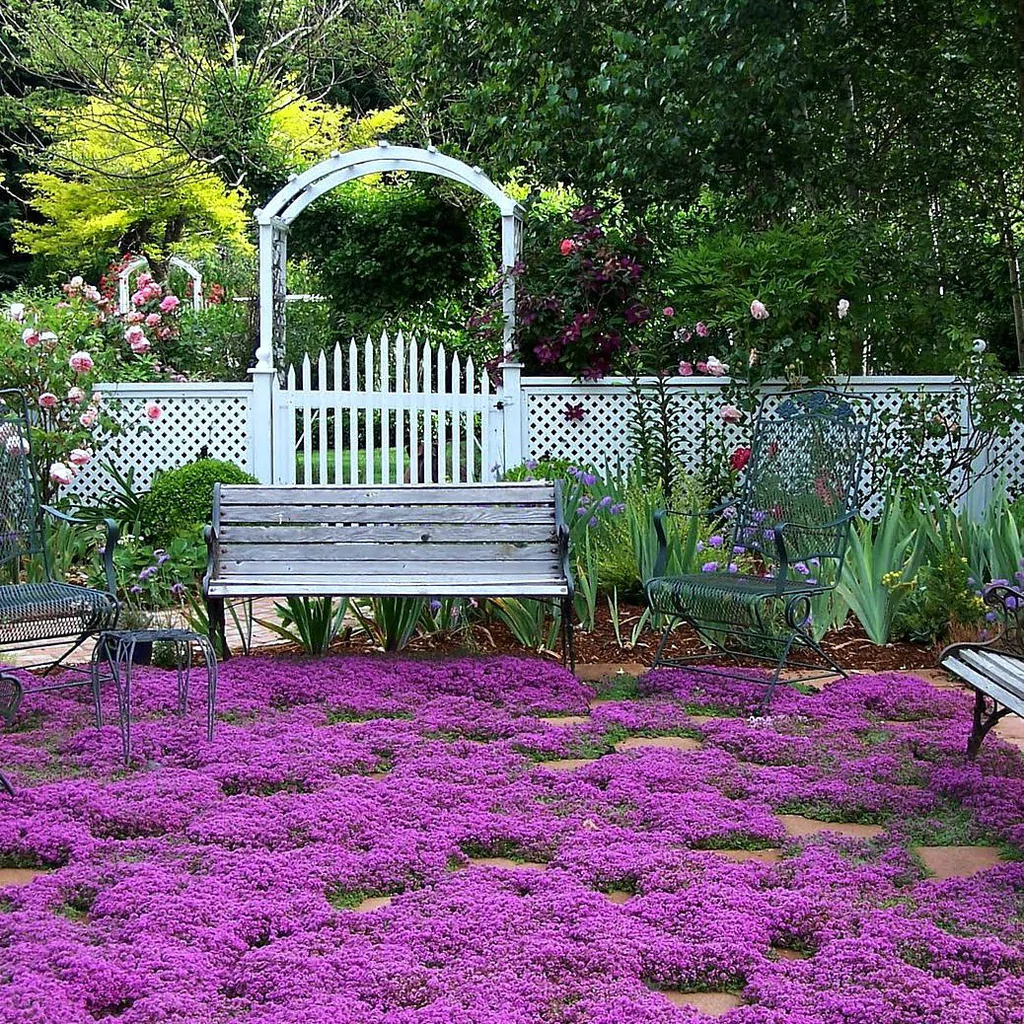
The Creeping Thyme plant grows beautifully when exposed to sunlight for 6 hours and in well-drained soil. Sometimes called Breckland thyme or elfin thyme, this flowering plant belongs to the mint family. Creeping thyme spreads properly in the second year, providing you with adequate coverage, and grows slowly in the first year to replace the grass in your lawn. But will spread in the entire area properly in the second year, giving you proper coverage. Creeping thyme can be specifically useful in conserving water, controlling weeds, and acting as a living mulch by shading the soil.
12. Chamomile
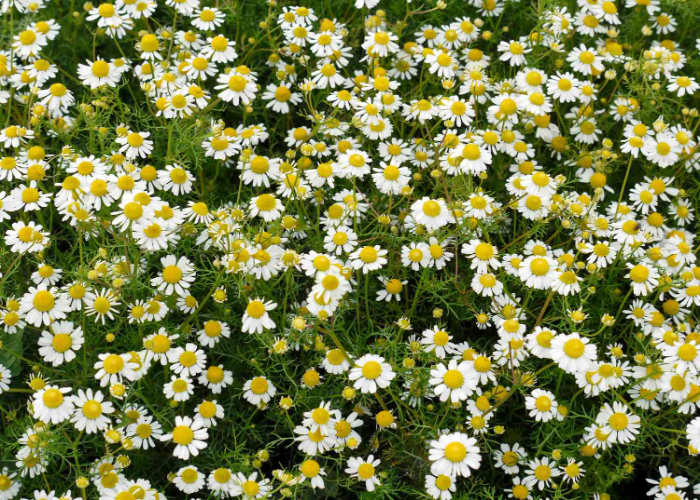
Chamomile grows best when the seeds are planted in an open sunny area. The plant needs light soil to grow in, such as sandy loam, as the moisture content has to be just right for proper growth. Soil like heavy clay will not work either because it won’t be capable of retaining a lot of moisture in winter and can look baked dry in summer. It is quite easy to maintain as it needs irrigation only when the dry spells are extremely lengthy. Remove the weeds from the area in which you wish to grow chamomile so that it doesn’t look like a soggy mess, and plant the seeds in spring at least 5 inches apart. This will make the project cost-effective, avoid competing for nutrients and give the plant enough room to grow.
13. Asiatic Jasmine
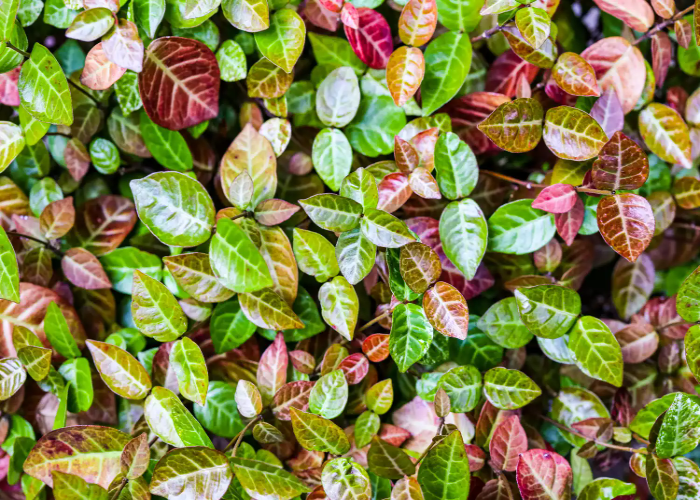
The Asiatic Jasmine grows best in well-drained soil that has a neutral pH and the temperature is humid. The star-shaped flowers are native to Japan and Korea and bloom in orange, yellow, pink, scarlet or red-purple colours. The plant is salt-tolerant and can thrive in moderately warm climates. The plant craves moist soil as long as there is a high proportion of organic matter mixed in it, and spraying the plant with fertiliser once a year at the beginning of the spring is preferred for optimal development of the plant. It grows best in shady areas where nothing else can grow as there is a paucity of sunlight. This can add to the aesthetic appeal of the lawn as it ensures the continuity of the green blanket.
14. Candytuft
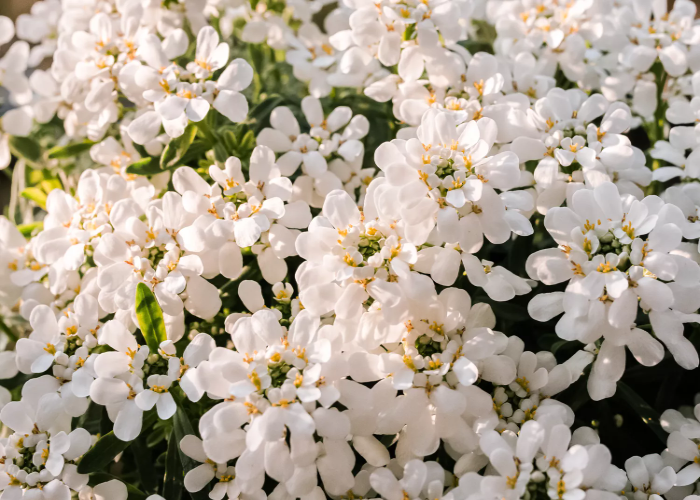
Iberis is another name by which Candytuft is commonly known to people. The ground-hugging plant bears flat clusters of pink, violet, white, purple and red flowers in spring. It is a self-spreading plant that establishes roots wherever the stem comes in contact with the ground. Candytuft is a woody subshrub that is categorised as a perennial and is native to Europe and the Mediterranean. It needs partial to full sun exposure and can grow in acidic, neutral and alkaline soil. This makes it one of the roughest plants that do not need a lot of maintenance or any extra chemicals for growth.
Conclusion
A maintain a pristine-looking lawn, a whole lot of effort is required. However, replacing grass with a different ground-hugging plant may not go well with the rest of the people who live in the same neighbourhood or community. Certain ground-covering plants tend to be invasive, so make sure you plant these super-spreaders in an area where you can contain their growth. Therefore, it is a must that you do so properly. Scalp the existing grass by mowing it down to an inch before replacing grass in your garden with any of the above-mentioned pollinator-friendly plants.
If your garden does not receive enough sunlight for any of the above-mentioned lawn alternatives to flourish, opt for sand or gravel instead of synthetic or artificial turf, as it can deteriorate the quality of the soil. We have to take care of our ecosystem on our own and make smart choices even if the lawn doesn’t look as “perfect”.

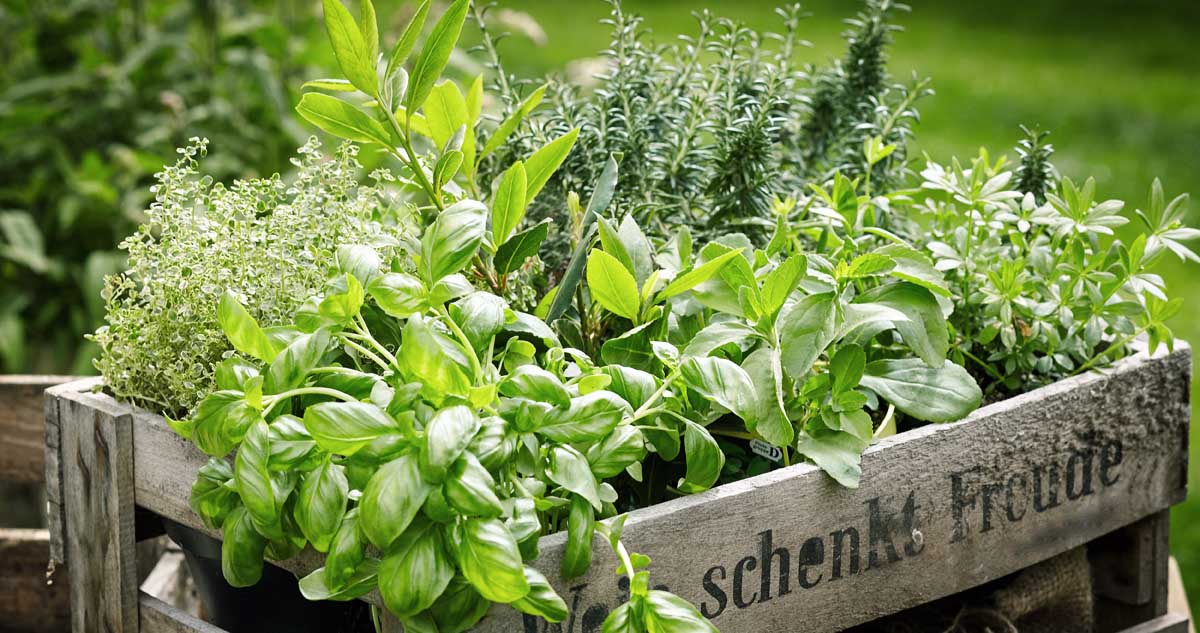
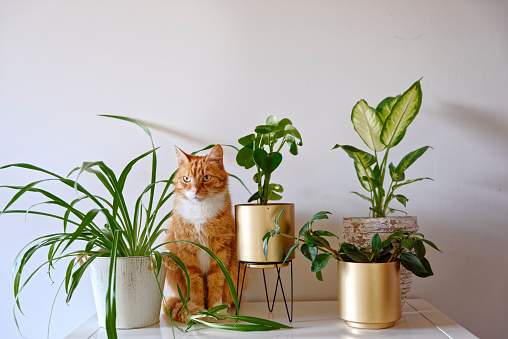
![20 Fast-Growing Hedge Varieties For Stylish Landscaping [UK]](https://staging.thearches.co.uk/wp-content/uploads/Fast-Growing-Hedges-For-The-Garden.jpg)
